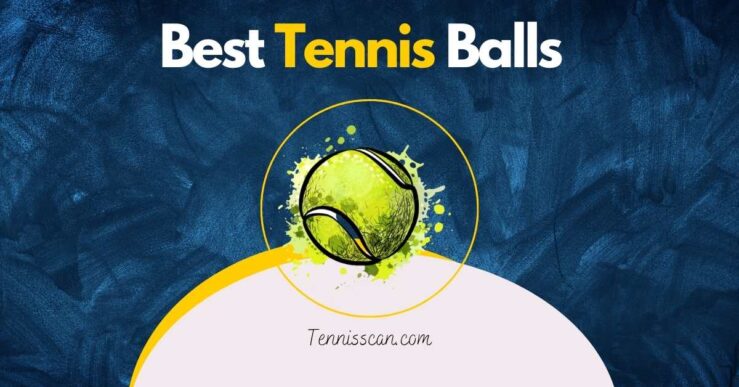Whether you’re a seasoned pro or just getting started, the tennis ball you choose may have a significant impact on your game. Since the 1870s, when players switched to rubber balls instead of leather or linen balls filled with horsehair or rags, modern balls have come a long way.
Vulcanized rubber, an innovative material created by self-taught scientist Charles Goodyear in the 1850s, was used to make the bouncing orbs for speed. Soon after, the all-rubber tennis ball was coated in flannel to improve play, and the shape was tweaked a little further, including switching from a cloverleaf to two half-shells. As a result, you now have brilliant spheres to help you volley at your best while learning the art of spin.
The minutiae of a tennis ball add up, from weight, bounce, and felt thickness to durability and pressure, and it’s startling how much better a decent ball feels than a cheap one. So toss your old tennis balls to the dogs and update your tennis game.
9 Best Tennis Balls 2022 You Can Buy Today
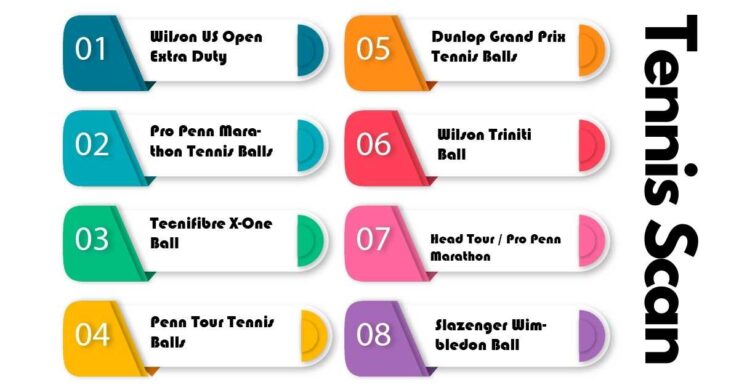
- 9 Best Tennis Balls 2022 You Can Buy Today
- Buyer’s Guide for Best Tennis Balls 2022:
- Conclusion
1- Wilson US Open Extra Duty Tennis Ball:
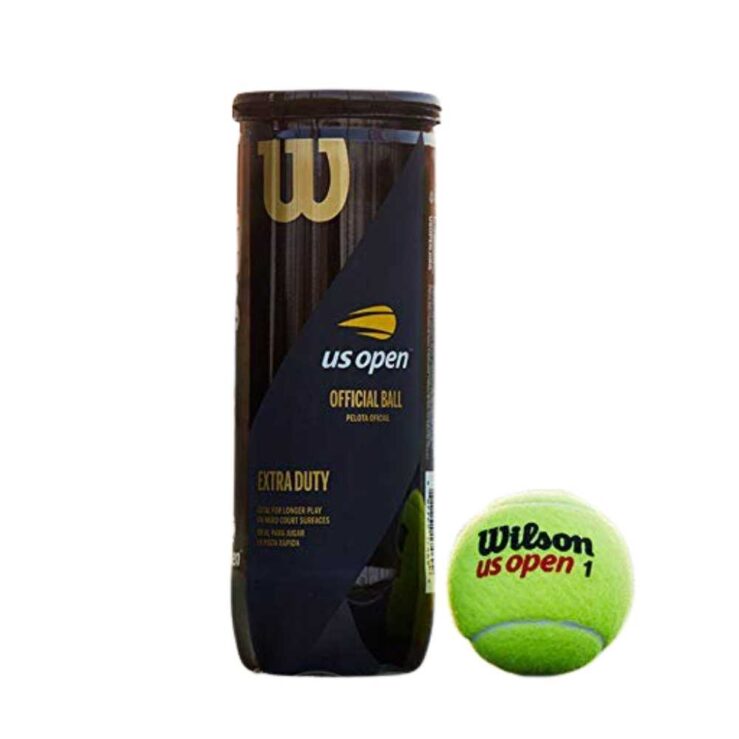
Key Features:
For more than 40 years, the official ball of the US Open has been one of the most incredible tennis balls on the market, providing better durability and exceptional bounce at a reasonable price.
Extra-duty US Open balls are plush, with another fur that gives them more life. This ball, made of superior woven felt, is prevalent among tennis players serious about developing their game on the hardcourt. It is the gold standard in tennis because of its unmatched consistency and performance. However, this is an ITF-approved extra-duty ball; it will only work on hard court surfaces.
The Wilson US Open Extra Duty Tennis Balls 4 Pack are tough enough to get you through the most challenging sets and keep you playing at your best. The pack of four tennis balls is the official ball of the US Open, demonstrating their exceptional quality. They are designed specifically for rugged and rough courts. Expect nothing less than the finest when you hit the courts with the Wilson US Open Extra Duty Tennis Balls, which the USTA and ITF have approved for competitive play.
Wilson’s new tennis ball pack Eco Overcap, unveiled at the US Open, stops balls from falling out while halving the amount of plastic used and leaving a reduced environmental imprint. Wilson is committed to pushing change across product categories regarding sustainability. We have removed the labels from our practice ball cans and produced the world’s first recyclable performance tennis ball packaging. You can read more reviews about Wilson US Open Tennis Ball.
The Wilson U.S. Open tennis ball is renowned for its exceptional playability, consistency, and traditional performance. Preferred on outdoor hard court surfaces. Premium high-grade extra duty felt is an excellent choice for matches and training sessions because of its remarkable durability. Premium high-grade extra-duty felt is used. On hard courts, optimal performance and durability are required. Tennis balls that have been inflated are preferred for use on hard court surfaces that are ideal for all matches.
Pros
- Durable
- Excellent performance
- Premium quality
- Hardcourt surface
Cons
- Heavy
- Hard surface.
Final Verdict:
These balls are perfect for beginners. They have easy spinning. They are incredibly durable and have excellent performance.
2- Pro Penn Marathon Tennis Ball:
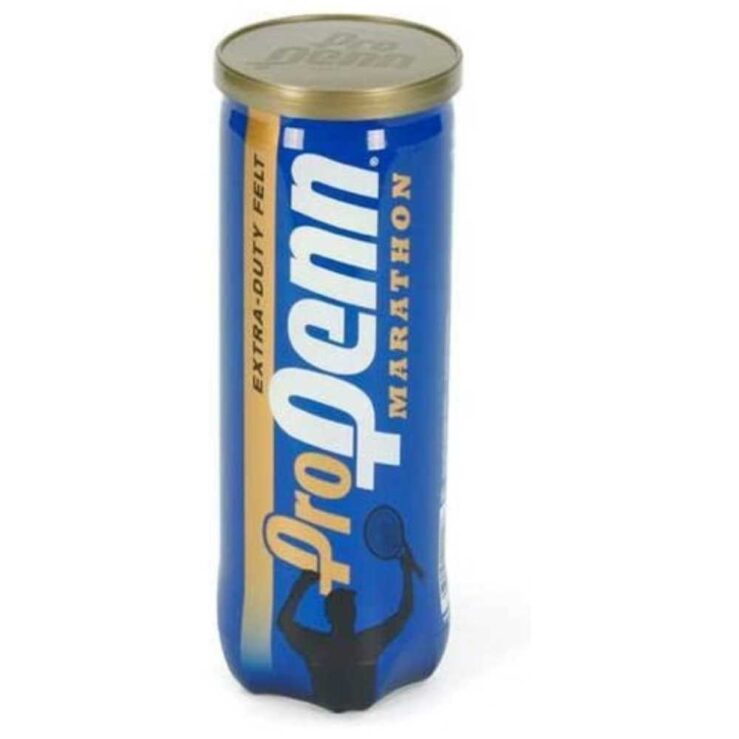
Key Features:
Penn’s Pro Penn Marathon tennis ball is a somewhat higher-quality tennis ball. They’re designed for extended tennis matches. The “Encore Technology” in the middle of these balls allows for 22 percent longer playtime.
Like Wilson’s US Open balls, these balls may keep their bounce and quality for weeks after opening the container. The ball’s color is a specific “Smart Optik” that provides excellent visibility while playing. In addition, they have an additional duty felt variant for hard courts and a standard version for clay or grass courts.
This ball has been certified for league play by the USTA and the ITF. Beginners and low-level intermediate players may not require a tennis ball of this caliber, but advanced players who want a long-lasting ball may consider it.
The Pro Penn Marathon tennis ball has patented EncoreTM Technology for a 22 percent longer-lasting core and high-tenacity LongPlay Felt for extended play, making it Penn’s longest-lasting tennis ball. Because of its proven lifespan, durability, and visibility, the Pro Penn Marathon is the official ball of PTR. In addition, all three Extra-Duty Felts (for hard courts), Regular-Duty Felt (for soft courts), and Extra-Duty High Altitude Felt are all available in the Pro Penn Marathon (for higher altitudes).
The Pro Penn Marathon Extra Duty Tennis Ball, which comes in a compact case for teams, clubs, and individuals, allows for long-lasting play. This is the longest-lasting Penn ball to date, with Encore technology extending the ball’s life by 22 percent and a LongPlay feel that can take any abuse.
Pros
- Performance that is consistent and lasts a long time.
- Visibility has improved.
- Maintains pressure over several weeks.
- Regular and extra-duty versions are available.
Cons
- The Penn Championship ball is somewhat heavier than the typical Penn Championship ball.
Final Verdict:
This case of Marathon Extra Duty balls has 24 cans of three balls each, for a total of 72 balls suited for outdoor hard court playability. The USTA and the ITF have authorized this ball for use in competition.
3- Tecnifibre X-One Ball:
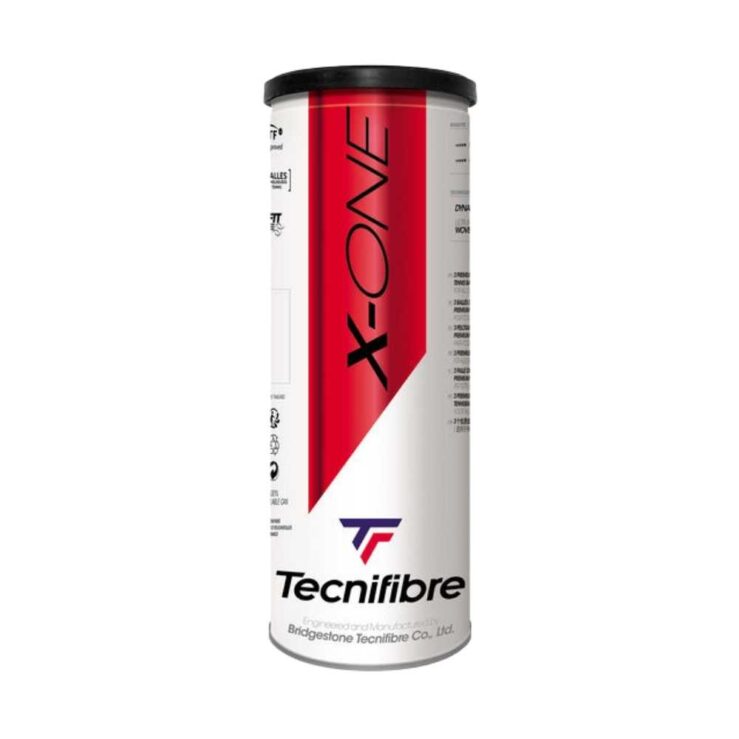
Key Features:
The Tecnifibre X-One Ball is currently the best ball available on the market. It’s a professional-level competition ball used at ATP 250/500 tournaments like Marseille, Rotterdam, and Gstaad.
The balls are made of Bridgestone’s high-quality rubber coated with Milliken’s 72 percent natural felt, which is also used on numerous other high-quality balls.
The X One is a rugged device that never turns into a dog ball. It appears to puff up a little, but only to a point, so you maintain a constant speed in the air.
The price is the only reason I don’t use this ball more frequently. They cost twice as much as the Tennis-Point Premium Ball, and while they’re excellent balls, I don’t believe you get double the performance.
If your preferred merchant has them (they’re not commonly accessible), I recommend giving them a try; they’re a ball worth utilizing for crucial matches. Finally, the balls aren’t numbered (more on that below), although this isn’t likely an issue because Tecnifibre balls aren’t widely used.
The Tecnifibre X-One is made up of 72 percent genuine felt. As a result, the felt lasts longer than any other ball available. The balls will “puff up” after around 20 minutes of solid hitting by 5.0+ level players, albeit the fluffing will not be the same as lower-end balls. Contrary to popular belief, some fluff is beneficial because it causes a ball to “bite” the air more when spinning. Naked balls that rapidly lose their feel are more aerodynamic and glide through the air faster. While too much fluff is terrible, a ball with little leftover felt is also undesirable.
Pros
- It plays well for longer since it fluffs up but not excessively.
- Excellent long-term durability
- The bounce is consistent, and the ball moves quickly in the air.
Cons
- For polygamies, it’s too strong.
- For certain heavy topspin players, there isn’t enough spin potential.
Final Verdict:
These balls are incredibly light in weight and have long-term durability. As a result, these balls are perfect for advanced players.
4- Wilson US Open Ball:
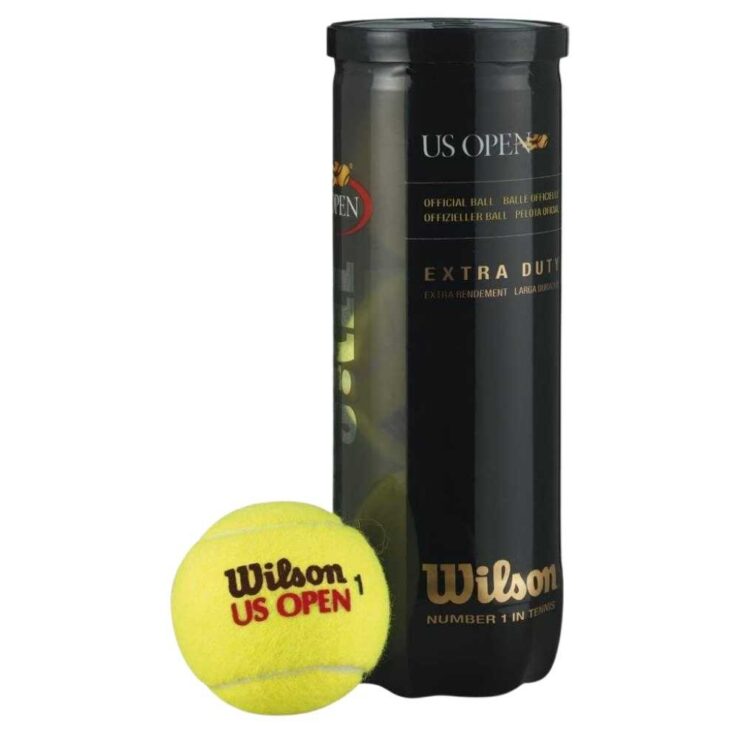
Key Features:
The Wilson US Open Ball is another prominent ball in the United States. I’ve played with this ball a lot over the years, and it’s my favorite ball to play in a competitive match. While many balls require some break-in time for a couple of games, the US Open balls are ready to play right out of the tube and have a consistent bounce.
The disadvantage for me is that they don’t last very long. They’re lovely for a set and a half, but they wear out rapidly, so you’ll have to replace them frequently. you can get some fantastic volume discounts.
The balls are the same size, pressure, and design. The difference in feel produces a significant difference in motion and quickness.
The feeling is the difference between ordinary duty and extra-duty balls. The extra duty ball’s felt thicker, with a higher nylon content coupled with wool, a looser weave, and a looser weave than the ordinary duty ball. The felt in the standard duty ball has more wool.
When choosing a tennis ball, a decent rule of thumb is that you’ll want regular-duty tennis balls if you play on clay courts. Regular duty balls are suitable for clay and indoor asphalt courts. However, ordinary duty balls are utilized in the US Open for the women’s players on a hardcourt concrete surface. The standard-duty ball is for clay, and the additional duty ball is for hard court or concrete for leisure players (asphalt).
Due to a tighter weave and less fluff, regular duty balls do not take up many clay particles on a clay court. This prevents the ball from growing much heavier throughout a match. The standard-duty ball fluffs relatively little throughout a game. Because there is less air friction, the ball moves and plays faster.
Pros
- It’s a blast to play. Fresh off the tube.
- Bounce and feel are consistent.
- Best small tennis ball
- Provide durable and consistent performance
Cons
- Tighter weave
- Less fluff
Final Verdict:
These balls are incredibly soft and light in weight. They have fast speed and high bounce. These balls are best for clay courts.
5- Penn Tour Tennis Balls:
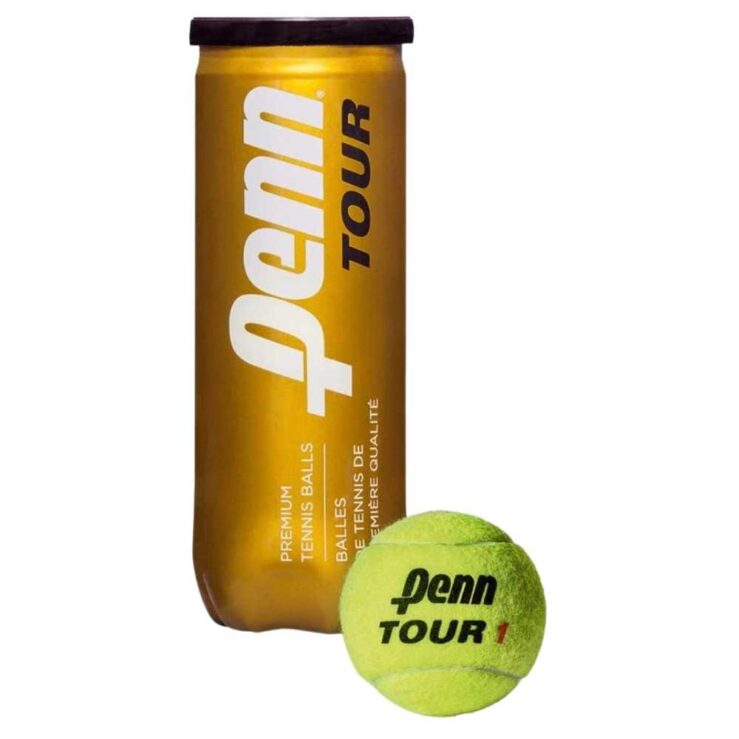
Key Features:
The Penn Tour tennis ball is the official ball of some of the country’s most prestigious professional tennis events, making it one of the better balls on our list. It’s made of tournament-grade “Long Play” felt and is available in other and ordinary duty versions. Penn’s Smart Optic technology is also used to make the ball more visible. The core is comprised of high-quality rubber with a reasonable bounce rate. This ball is also USTA, and ITF certified.
Penn Tour tennis balls are part of Penn’s premium tennis balls. They provide players with the best core and felt technology for the best mix of consistency, durability, and overall playability. Penn Tour balls are used in four of North America’s top five events.
Penn Tour tennis balls are high-performance tennis balls that have been used in four of North America’s top five events. These premium tennis balls are wrapped in Penn’s patented Long Play felt for long wear and include our Smart Optic high visibility felt treatment, which increases visibility by 19% over a conventional tennis ball.
Penn’s premium range of tennis balls is the world’s most technologically sophisticated, offering players the best core and felt technology for the ultimate mix of consistency, life span, and overall playability. Extra-duty, regular-duty, and XD high altitude cans are available, and a 4-ball can (extra-duty and regular-duty).
The Penn Tour tennis balls have been certified by the USTA and the ITF.
This USTA-approved ball is made for recreational players who need firm control and court play. It is suitable for all types of court surfaces. Penn’s Recreational Tennis Balls are ideal for tennis players who want to have some fun and play with a ball that has a bit more “character.”
Pros
- Coloured Smart Optic for greater visibility
- A ball that lasts for a long time and bounces well.
- They keep their form rather than flattening out.
- For days or weeks, it retains its quality.
- Regular and extra-duty versions are available.
Cons
- Compared to other balls, this one is a little lighter.
- It has a somewhat larger feel than other balls
Final Verdict:
These balls are long-lasting, and they bounce so well. They are perfect for cold weather.
6- Dunlop Grand Prix Tennis Balls:
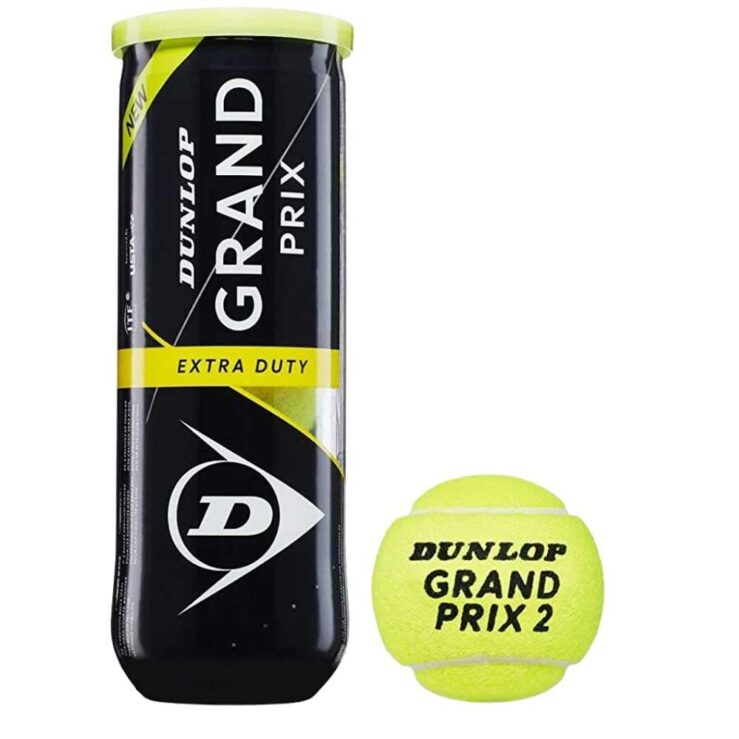
Key Features:
Another high-end choice is the Dunlop Grand Prix tennis ball. The rubber core of this ball is made up of a unique blend of 14 distinct components. In addition, the outside is made of a fine woven felt resistant to wear and tear.
The ball’s yellow tint is intended to be brighter than the ordinary tennis ball to improve visibility. Dunlop refers to it as “Max Glo” felt. Extra duty is done for hard courts, and the standard task is done for clay or grass courts. These balls are also sanctioned in USTA and ITF tournaments and leagues.
These tennis balls are one of my favorites, but they aren’t as well-known as Penn and Wilson. Other players have complained about Dunlop in league matches, but I haven’t noticed any concerns.
The Dunlop Grand Prix Extra Duty Tennis Ball series is the pinnacle of durability and performance. The secret rubber core composition comprises fourteen elements blended with the finest woven felt to create a ball with exceptional performance and feel. The Max Glo feel is used on the Grand Prix Hard Court balls. Because Max Glo felt is 14% brighter than standard fabric, you can see the ball earlier, giving you more time to prepare your shot. In addition, the Extra Duty ball is designed to endure the damage that hard courts may cause.
The Dunlop Grand Prix Extra Duty Tennis Balls consistently perform hard courts for tournament-style play.
The Grand Prix has a premium woven felt for better visibility. A customized rubber core for unrivallunrivaledll Court tennis balls is designed specifically for tournament play and delivers consistent performance on every hard surface.
The secret rubber core composition is made up of 14 elements and blended with the finest woven felt to create a ball with exceptional performance and feel. The ball and the racket are the most significant component of tennis equipment.
Pros
- The colors are brighter and easier to see.
- Long-lasting
- It doesn’t go flat quickly.
- Regular and extra-duty versions are available.
Cons
- Not as well-known as Penn or Wilson.
Final Verdict:
These balls are brighter in color to easily be seen in a match. They are highly long-lasting. These balls are excellent for outside courts.
7- Wilson Triniti Ball:
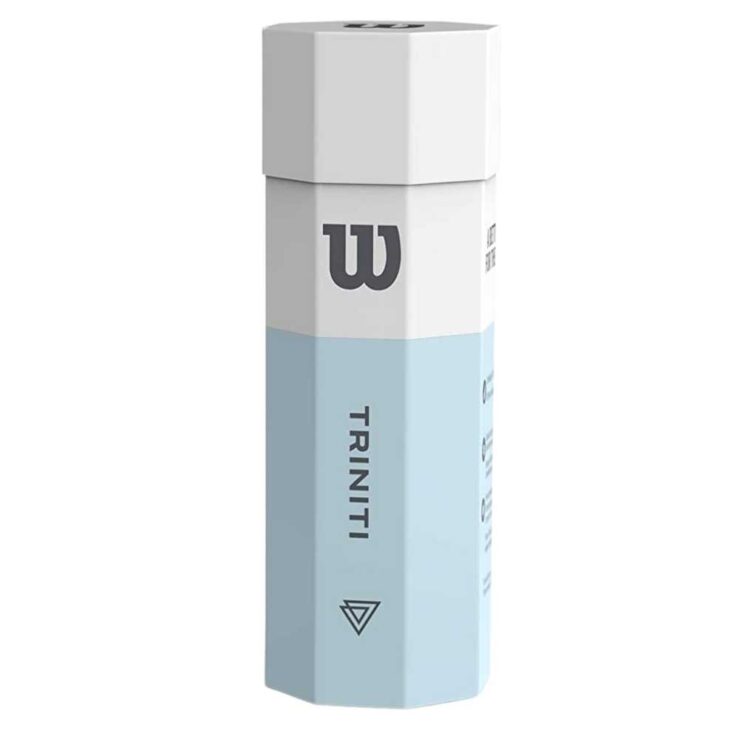
Key Features:
The Wilson Triniti Ball is the final ball on my list, and it’s a wildcard selection. Wilson promotes it as environmentally friendly because it comes in a cardboard tube. While it isn’t a pretty pressurized ball, it does have some of the same characteristics. Wilson has created a new core known as Engage, constructed of a novel elastomer substance. As a result, the body can sustain its vitality for four times longer than a regular ball.
The new elastomer core weighs less than a standard core, so Wilson built the new heart thicker to keep the overall weight the same. This, according to their marketing, provides more spin, feel, and control.
I tried out this ball when it first came out, and it’s a fun one. I hit with them around ten times, and the ball will last you long.
I found these difficult and tricky to play with right out of the cardboard tube, but after 20 minutes, they improved. Overall, I find their bounce a little unpredictable, but I would recommend giving them a try because their longevity makes them an ideal alternative for players who don’t want to buy new cans every week.
I imagine it will take some time for a fast-playing pro player with strong spin to adjust to this ball, but it will be an excellent ball for practically every other player to use in both matches and practice.
Furthermore, the notion of more outstanding durability is fantastic. This ball is best for a player who only plays once or twice a week and uses a new can each time to attain ideal performance. A ball like this with a more persistent bounce can save you some money in dollars, euros, kronor, or rebels.
Pros
- They are not heavy.
- They have a compact feel.
Cons
- Persistent bounce
Final Verdict:
These balls are convenient and are very easy to play with it. These balls are best for walkers.
8- Head Tour / Pro Penn Marathon:
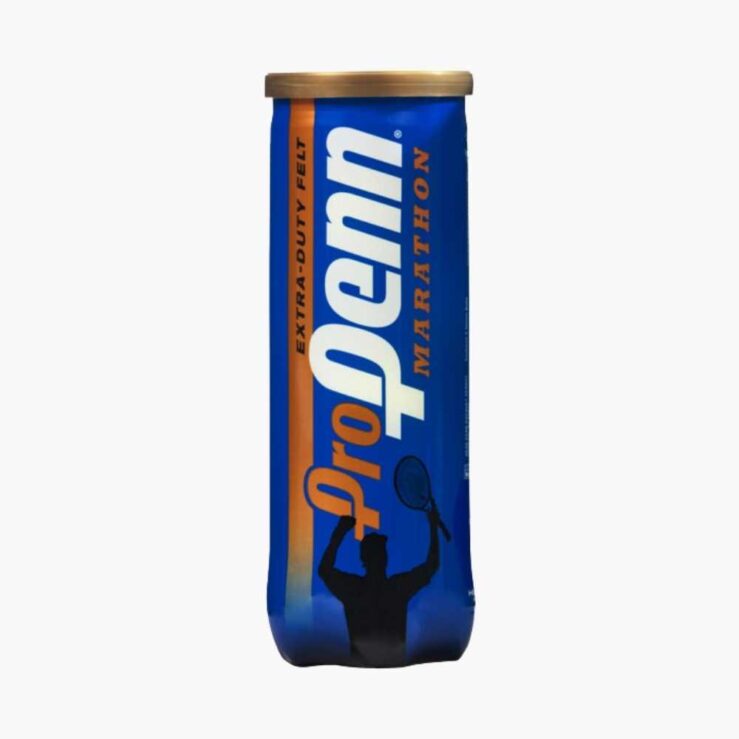
Key Features:
The Penn Marathon (or Penn Tour) was the official ATP ball before Dunlop negotiated a new arrangement. It is commonly used in the United States. The balls are offered under the Head brand in Europe, although identical.
Penn balls were manufactured in Arizona, but after being purchased by Head, the plant shuttered in 2009, and production was outsourced to China. Many gamers on the forums claim that the ones built in the United States are of higher quality, but I had no experience with them before the transition. The Head Tour Ball is an excellent ball that I’ve used multiple times. They are pretty firm right out of the can, so they fly a little at first, but they last a long time.
While it’s not my personal favorite, it’ll be at the top of many players’ lists since it’s prevalent at the club level, plays well even when wet (unlike Slazenger Wimbledon balls), and is just a solid all-around ball that performs well on all surfaces.
Penn’s longest-lasting tennis ball is the Pro Penn Marathon. Encore Technology features a 22 percent longer-lasting core, a high-tenacity Long Play feel for extended play, and a Smart Optic feel for optimal visibility. Because of their durability, lifespan, and visibility, USPTA pros prefer Pro Penn Marathon balls. For frequent gamers, this is a practical scenario. There are three balls in each can and 24 cans in every case (72 balls total).
The Pro Penn Marathon, Penn’s longest-lasting tennis ball, is the preferred choice of USPTA teaching professionals. Penn’s Encore technology extends the life of the core, and the Long Play felt adds to the durability. In addition, optic felt allows for optimum visibility. These Pro Penn Marathon balls are composed of extra-durable felt and are ideal for hard courts.
Pros
- High bounce.
- Durability.
- Long-lasting
Cons
- They are a bit hard.
Final Verdict:
These balls are best for hard court. They are highly durable and long-lasting. They have high tenacity.
9- Slazenger Wimbledon Ball:
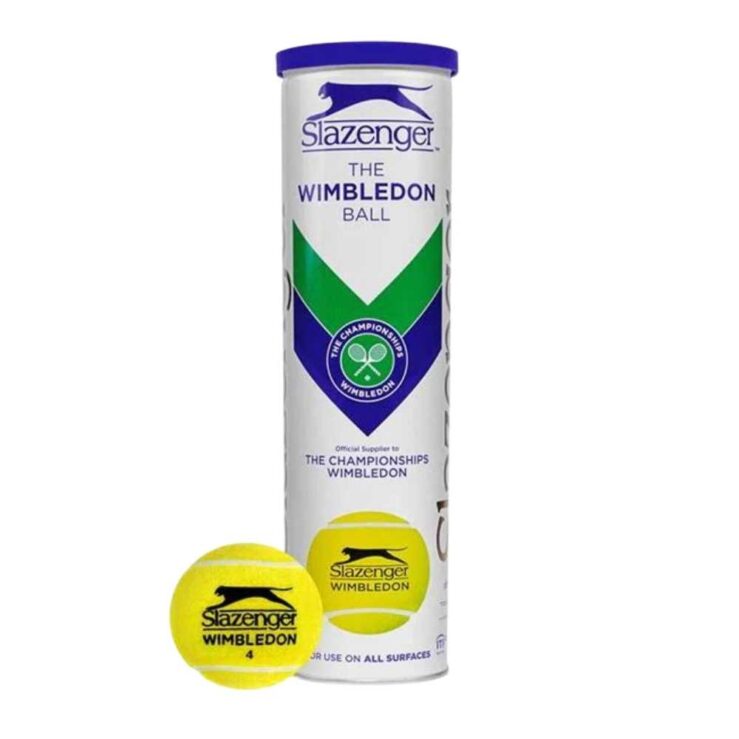
Key Features:
Slazenger’s famous Wimbledon ball it’s one of the most often used balls at the club level in the UK, alongside the Dunlop Fort, and almost every player who’s played the game will have used the Slazenger Wimbledon at some stage.
Dunlop manufactures the ball in Bataan, but it is denser and fluffier than Dunlop-branded balls and performs differently. When fresh, the Dunlop Fort All Court is bullet-like, whereas the Slazenger Wimbledon is plusher right out of the can. This ball is one of my favorites, but only in certain situations. For example, when I use this ball on hard courts, it becomes fluffed up and appears to play slowly.
That may suit certain players who want extended rallies and slow-paced points, but I prefer a ball flying through the air. It feels a lot more at ease, whether on grass or fake grass. It has a nice, substantial feel, and the thicker think makes it more controllable. Its qualities make it an excellent match for a fast surface because it isn’t flying through the air at a ridiculously rapid speed.
The Wimbledon tennis balls by Slazenger are among the most popular in the UK and are used in crucial pro tour tournaments such as the Wimbledon Champions and the Queen’s Club Championships. They’re also trendy at the club level and in local league tennis. But are they that good? We will put them to the test in our Slazenger Wimbledon tennis ball review.
They also have Slazenger’s Hydro Guard Technology; a felt covering that prevents grass from staining the felt on the balls. It also improves their resistance to surface dampness, essential while playing in rainy weather.
Pros
- On grass, artificial grass, and carpet courts, it performs admirably.
- The iconic Slazenger ball was used at the very first Wimbledon.
- Perfect in rainy weather
Cons
- Not practical in average weather.
Final Verdict:
These balls are perfect in wet weather. They are fluffy and very soft.
Buyer’s Guide for Best Tennis Balls 2022:
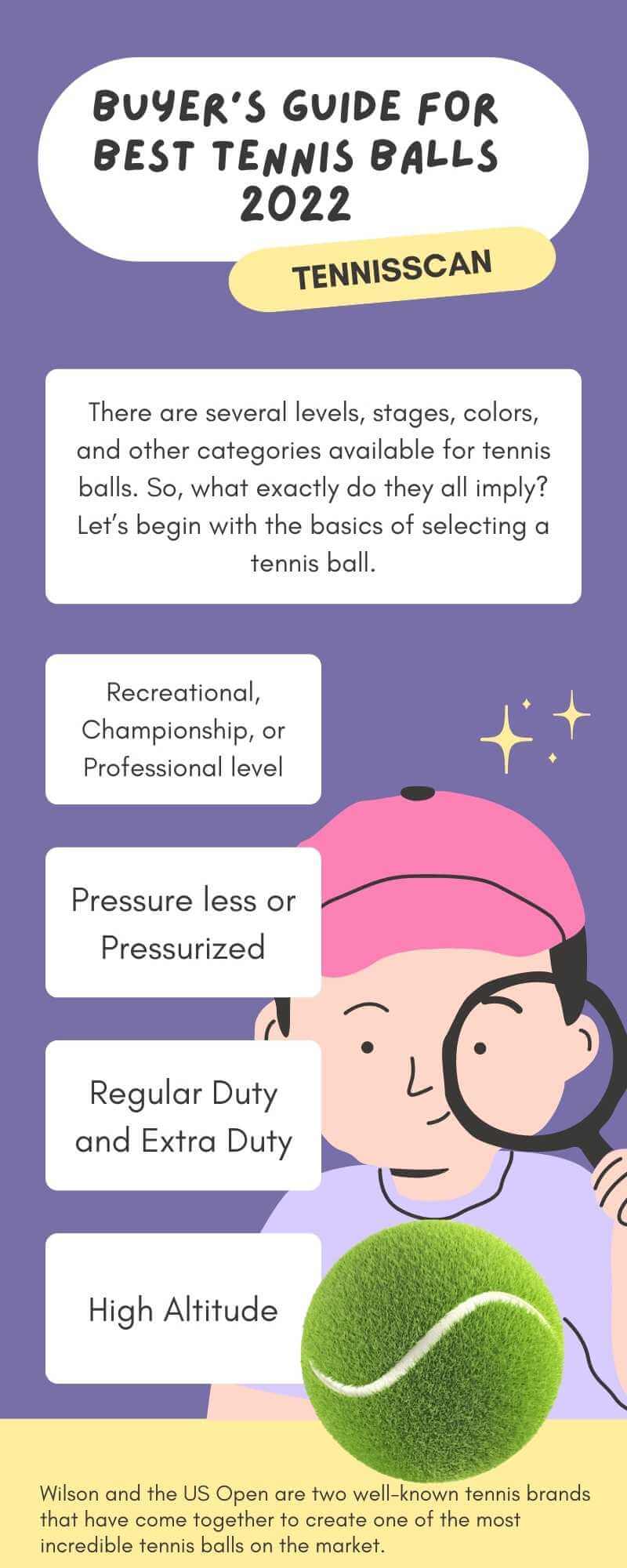
Maybe more than any other sport, Tennis equipment can make or destroy your game. So choosing a tennis ball that suits your needs is an essential component of the game or whether you’re a seasoned player or have never picked up a racket. To a novice, they may all appear to be the same. Still, there are hundreds of differences between various tennis balls—and over 200 brands certified by the International Tennis Federation—making deciding on the most OK tennis ball for you a daunting task.
Does it matter what color you wear? What role does altitude have in tennis? Which tennis balls are the fastest? What are the best tennis balls for a spin? Tennis balls that are easy on the elbows? If any of these concerns you when choosing a tennis ball, you’ve come to the right place. Tennis-Point has Wilson, Dunlop, Penn, Wilson, and Babolat practice tennis balls, kids’ tennis balls, tournament tennis balls, elbow-ease tennis balls, and more. And it’s here that we’ll try our best to sort it all out so you can make a rational decision today and in the future!
There are several levels, stages, colors, and other categories available for tennis balls. So, what exactly do they all imply? Let’s begin with the basics of selecting a tennis ball.
Recreational, Championship, or Professional level:
Tennis balls are divided into three essential quality levels by the leading manufacturers: recreational, Championship, and professional. Leisure tennis balls are ideal for use on tennis machines and other practice purposes; championship-level balls are a step up and can be used for league match play. Finally, professional-level tennis balls are of the highest quality available. These are the professional tour tennis balls.
Pressure less or Pressurized:
Another factor to consider when selecting a tennis ball is to see the difference between pressurized and pressure-less tennis balls. Pressure-less balls are frequently utilized for beginners, practice, or leisure play. They get their bounce from the outer rubber construction rather than the air within. As a result, pressure more than miniature balls do not lose their bounce as ordinary balls do; in fact, they acquire bounce as the outer felt fades. Many players love pressure-less tennis balls because they last longer, while others find them heavier and more challenging to play.
Pressurized tennis balls are far more prevalent and are used by the pros in tournaments. The Internal air pressure provides them more bounce, speed, and spin right out of the can, but it diminishes fast over time. According to research, most pressurized tour tennis balls have a little more than two weeks lifespan, and many are only used for one match.
Regular Duty and Extra Duty:
When searching for the new tennis balls, Keep in mind the sort of court you play on. It’s simple: if you play on clay or indoor courts frequently, you’ll want ordinary-duty tennis balls; if you play on hard courts, you’ll wish for additional-duty tennis balls. Regular duty tennis balls feature thinner felt, which absorbs less clay on impact, but extra duty felt will last longer on more demanding hard courts and grass surfaces.
High Altitude:
It’s crucial to consider where you’ll be hitting the court while choosing tennis balls. Pressurized tennis balls bounce more and travel quicker at high elevations, which is troublesome for all types of players. Four thousand feet or more is considered “high altitude” by the ITF. If you’re playing at or above this elevation, you’ll want to invest in high-altitude tennis balls, which are designed to alleviate these concerns and provide a more typical feel on the court.
For Beginners and Kids:
A range of entry-level tennis balls is expressly intended for slower
play, whether you’re just getting started or introducing your kids to the sport. The fastest tennis balls may be suitable for professionals, but slower-moving foam tennis balls are ideal for teaching and training, or you might try one of three beginning ball stages:
Stage 3 (Red): These starter balls are designed for young children (usually ages ten and under) to help them improve their abilities, fine-tune coordination, and enhance their confidence. The game has been approved for use on a 36-foot court.
Stage 2 (Orange): These balls have a lower flight and are ideal for 60-foot courts. Even though these are more sophisticated than Stage 3, they will still slow the game down.
Stage 1 (Green): In the final stage before a tournament tennis ball has a slightly lower bounce and is designed to help beginners use good technique, used on a full-size tennis court with a length of 78 feet.
Specialty:
Choosing a tennis ball is more complex than it appears, and in addition to the typical differences, there is a range of specialty tennis balls available. There are a variety of tennis balls to choose from, ranging from elbow-ease tennis balls that are meant to lessen arm impact to the longer-lasting core technology that enhances bounce life.
Conclusion
The Wilson US Open tennis ball is our favorite. This ball is made of high-grade materials, has a regular bounce, and will endure weeks in your tennis bag without losing much quality.
If you only play on weekends or a few days apart, you’ll have to either get a new can or a high-quality ball like the Wilson US Open. Although the added duty is designed for hard court surfaces, this ball will appeal to all players. Even though these balls are technically additional duty, they may be used on any sort of court.
Wilson and the US Open are two well-known tennis brands that have come together to create one of the most incredible tennis balls on the market.
